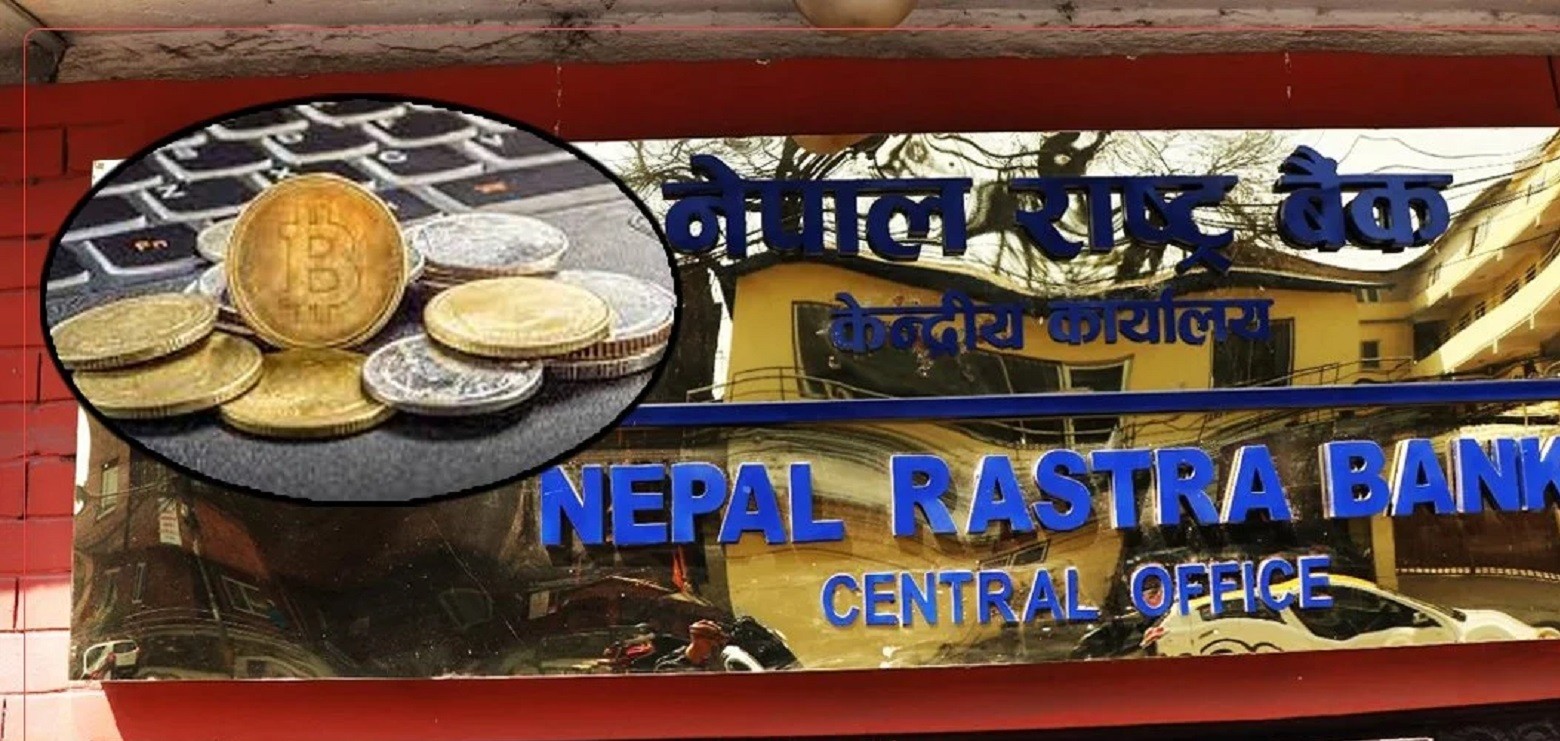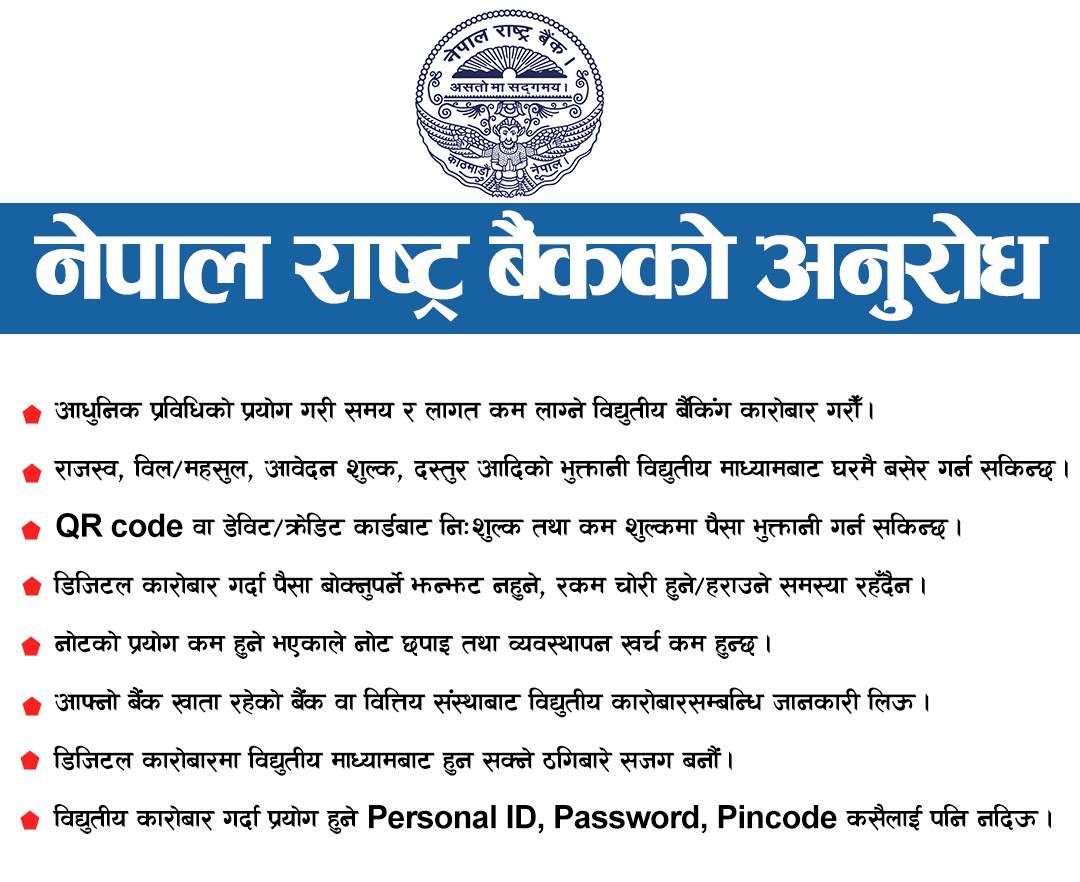Non-banking assets of Banks in Nepal : Banks in Nepal Non-banking assets increase as mortgage lending limit lifted
Oct Mon 2025 01:26:34

Kathmandu. Non-banking assets have increased at a high rate after the removal of the limit on collateralization by banks and financial institutions. As of Bhadra of the current fiscal year, non-banking assets worth Rs 50.75 billion have been seen, which is 61.73 percent more than the same period of the previous year.
Non-banking assets held by Nepal’s banks and financial institutions have climbed past Rs 50 billion as the sluggish economy has stalled loan recovery and property auctions. According to Nepal Rastra Bank (NRB), these assets reached Rs 50.56 billion by mid-July of the current fiscal year 2025/26, up sharply from Rs 35.50 billion in fiscal year 2023/24.
According to the National Bank, as of Bhadra, the non-banking assets of commercial banks have reached Rs 42.91 billion, development banks Rs 4.77 billion, and finance companies Rs 3.66 billion.
Due to the Corona pandemic, economic recession, and the slow pace of the real estate market, as borrowers are unable to repay loans on time, banks have increased the process of auctioning collateral or recovering it in their own names. The government has amended the Land Act to allow banks to keep land in their names for three years, which has eased the recovery process somewhat.
However, in the meantime, the bank's bad loan ratio has decreased to 4.62 percent, contrary to expectations, which is higher than 4.37 percent last year. Experts have interpreted this as a sign that economic activity has slowed and debt collection has become challenging.
Impact on the banking sector: Non-banking assets are increasing
The decline in real estate transactions has had a direct impact on the banking sector. The slowdown in the real estate market has led to problems in repaying home loans, real estate loans, and construction-related loans. According to data released by Nepal Rastra Bank, the non-banking assets of 20 commercial banks reached Rs 42.80 billion in the current fiscal year in Shrawan.
This is 36.49 percent more than the previous year. In the same period of the previous year, the non-banking assets of commercial banks were Rs 31.36 billion. The increase in non-performing loans (NPL) in commercial banks has had an impact on non-banking assets. In the last one year, the bad loans of commercial banks have increased by 0.76 percentage points. The average bad loans of banks and financial institutions, which were 3.86 percent in Shrawan last year, have remained at 4.62 percent in Shrawan of the current fiscal year. In one year, the non-banking assets of commercial banks have increased by 36.49 percent to Rs 42.80 billion.
Revenue shortfall, pressure on the economy
The decline in real estate transactions has directly affected the government's revenue collection. The fact that the revenue collected in Shrawan of the last fiscal year has dropped to Rs 3.14 billion this year indicates the slow pace of the economy. The income source of thousands of brokers, engineers, surveyors, legal advisors and contractors directly involved in land transactions has also been affected.
Local level apathy
The way forward
The government should make the classification process clear and sustainable once and for all. The temporary amendments every year are compounding the problem. In addition, coordination between tax policy, credit policy and land use policy is necessary to stabilize the real estate market.
If the classification and segmentation problem is not resolved quickly, the non-banking assets of the banking sector will increase further, which will have an impact on the overall economy.
Real estate is a major dynamic sector of the Nepalese economy. Its slowdown affects everything from revenue to the banking sector and employment. In the current situation, only if the classification and legal delays are addressed immediately can the market become dynamic again.
It is difficult to restore the dynamics of the real estate market without cooperation between the government, local levels and the private sector. Classification






